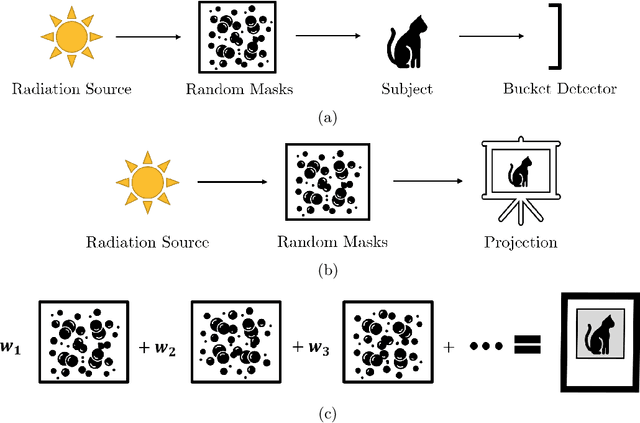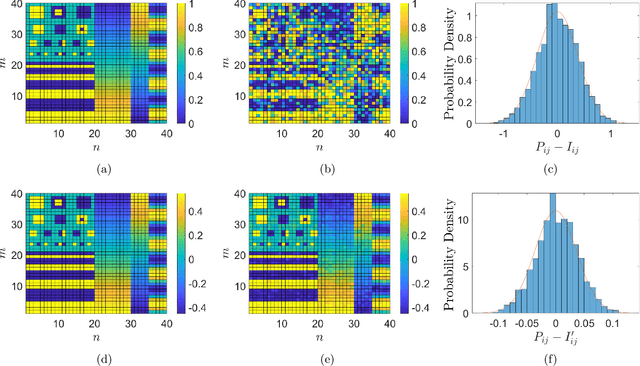Ghost Projection
Paper and Code
Sep 03, 2021



Ghost imaging is a developing imaging technique that employs random masks to image a sample. Ghost projection utilizes ghost-imaging concepts to perform the complementary procedure of projection of a desired image. The key idea underpinning ghost projection is that any desired spatial distribution of radiant exposure may be produced, up to an additive constant, by spatially-uniformly illuminating a set of random masks in succession. We explore three means of achieving ghost projection: (i) weighting each random mask, namely selecting its exposure time, according to its correlation with a desired image, (ii) selecting a subset of random masks according to their correlation with a desired image, and (iii) numerically optimizing a projection for a given set of random masks and desired image. The first two protocols are analytically tractable and conceptually transparent. The third is more efficient but less amenable to closed-form analytical expressions. A comparison with existing image-projection techniques is drawn and possible applications are discussed. These potential applications include: (i) a data projector for matter and radiation fields for which no current data projectors exist, (ii) a universal-mask approach to lithography, (iii) tomographic volumetric additive manufacturing, and (iv) a ghost-projection photocopier.
 Add to Chrome
Add to Chrome Add to Firefox
Add to Firefox Add to Edge
Add to Edge